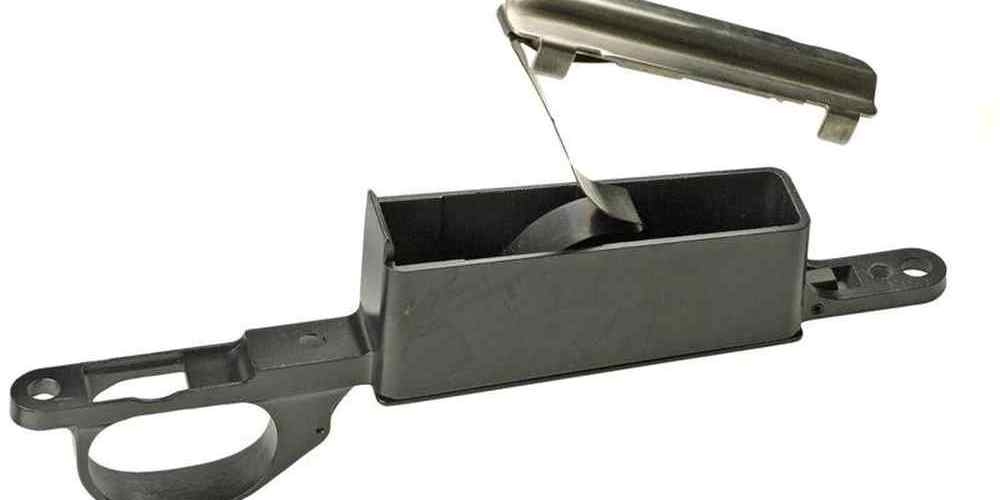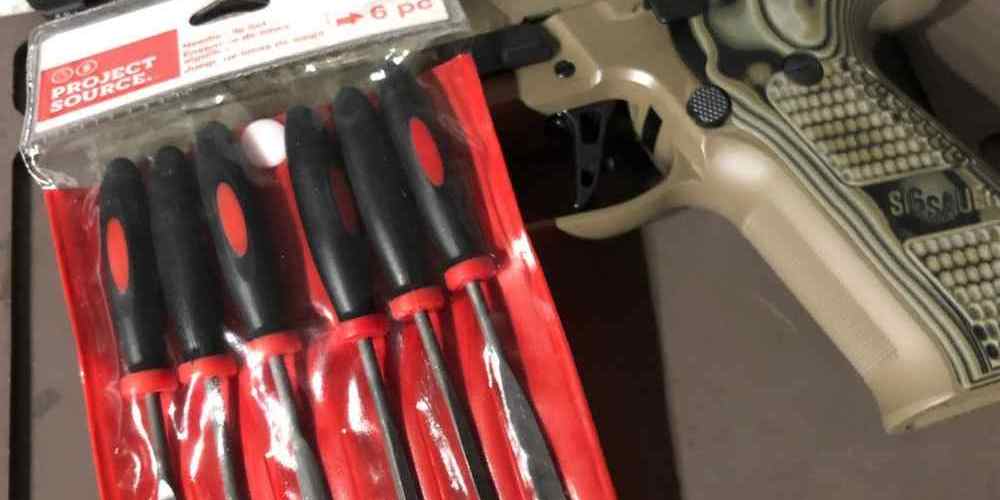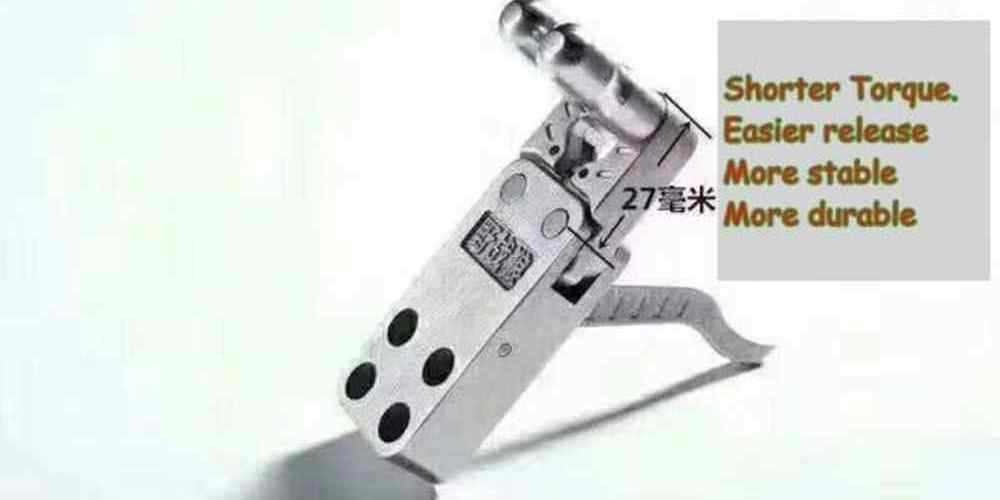“Rifle Triggers: Reliable Performance in Cold Weather Conditions”
Importance of Proper Trigger Maintenance in Cold Weather
When it comes to shooting in cold weather, proper trigger maintenance is crucial for ensuring optimal performance. Cold temperatures can have a significant impact on the functionality of a rifle trigger, potentially leading to misfires or other issues that can affect accuracy and reliability. In this article, we will discuss the importance of proper trigger maintenance in cold weather and provide some tips for managing performance in extreme conditions.
One of the main challenges of shooting in cold weather is the effect that low temperatures can have on the lubrication of a rifle trigger. Cold weather can cause lubricants to thicken or even freeze, which can result in a sluggish or unresponsive trigger. This can make it difficult to achieve a smooth and consistent trigger pull, which is essential for accuracy and precision when shooting.
To prevent issues with trigger performance in cold weather, it is important to regularly clean and lubricate your rifle trigger. This will help to ensure that the trigger mechanism operates smoothly and reliably, even in extreme temperatures. When cleaning your trigger, be sure to use a high-quality gun cleaner and lubricant that is designed to withstand cold weather conditions.
In addition to regular cleaning and lubrication, it is also important to protect your rifle trigger from the elements when shooting in cold weather. Moisture and condensation can cause rust and corrosion, which can affect the functionality of the trigger mechanism. To prevent this, consider using a trigger guard or cover to shield your trigger from snow, rain, and other moisture.
Another important factor to consider when shooting in cold weather is the impact that temperature can have on the materials used in the construction of your rifle trigger. Some materials, such as plastic or composite triggers, may become brittle or less flexible in cold temperatures, which can affect the overall performance of the trigger. If possible, opt for a rifle trigger made from high-quality materials that are designed to withstand extreme conditions.
In addition to proper maintenance and protection, there are some other tips that can help you manage trigger performance in cold weather. For example, consider using a lighter trigger pull weight in cold temperatures, as heavier trigger pulls can be more difficult to control when wearing gloves or shooting in cold conditions. Additionally, be sure to practice proper trigger control techniques, such as using the pad of your finger to pull the trigger rather than the joint, to ensure a smooth and consistent trigger pull.
Overall, proper trigger maintenance is essential for managing performance in cold weather. By regularly cleaning and lubricating your rifle trigger, protecting it from the elements, and using high-quality materials, you can help to ensure that your trigger operates smoothly and reliably in extreme conditions. With the right care and attention, you can enjoy accurate and consistent shooting performance even in the coldest of weather.
Best Rifle Trigger Options for Cold Weather Shooting
When it comes to shooting in cold weather conditions, having the right rifle trigger can make all the difference in your performance. Cold weather can affect the performance of your rifle trigger, causing it to become stiff or sluggish. This can lead to missed shots and frustration for the shooter. In this article, we will discuss the best rifle trigger options for cold weather shooting and how to manage performance in extreme conditions.

One of the key factors to consider when choosing a rifle trigger for cold weather shooting is the material it is made from. Some materials, such as steel, can become stiff and difficult to operate in cold temperatures. Titanium and aluminum triggers, on the other hand, are less affected by cold weather and can provide a smoother and more consistent trigger pull.
Another important factor to consider is the design of the trigger. Some triggers are designed with a wider surface area, which can make them easier to operate with gloves on in cold weather. Additionally, triggers with adjustable pull weights can be beneficial in cold weather conditions, as they allow the shooter to customize the trigger to their preferences.
One popular option for cold weather shooting is the Timney Trigger. Known for their precision and reliability, Timney Triggers are a favorite among shooters who need consistent performance in extreme conditions. The Timney Trigger is available in a variety of pull weights and designs, making it easy to find the perfect trigger for your rifle.
Another top choice for cold weather shooting is the TriggerTech Trigger. TriggerTech Triggers are known for their crisp and clean break, making them ideal for precision shooting in cold weather. With adjustable pull weights and a wide trigger surface, TriggerTech Triggers are a great option for shooters who need a reliable trigger in extreme conditions.
For shooters who prefer a more traditional trigger design, the Jewell Trigger is a popular choice for cold weather shooting. Jewell Triggers are known for their smooth and consistent pull, making them a favorite among precision shooters. With adjustable pull weights and a wide trigger surface, Jewell Triggers are a reliable option for shooters who need consistent performance in cold weather.
In addition to choosing the right rifle trigger, there are a few tips and tricks that can help manage performance in cold weather conditions. One important tip is to keep your rifle and trigger well-lubricated in cold weather. Cold temperatures can cause lubricants to thicken and become less effective, so it is important to use a high-quality lubricant that is designed for cold weather conditions.
Another tip is to keep your rifle and trigger covered when not in use. Cold temperatures can cause metal to contract, which can affect the performance of your trigger. By keeping your rifle covered when not in use, you can help protect it from the elements and ensure that it performs at its best when you need it most.
Overall, choosing the right rifle trigger and taking proper care of your equipment can help you manage performance in cold weather conditions. By selecting a high-quality trigger that is designed for cold weather shooting and following these tips and tricks, you can ensure that your rifle performs at its best in extreme conditions.
Tips for Adjusting Rifle Triggers in Cold Weather
When it comes to shooting in cold weather, there are a few key factors that can affect the performance of your rifle. One of the most important components to consider is the trigger. In extreme cold temperatures, the metal components of a rifle can contract, causing the trigger pull weight to increase. This can lead to inconsistent shot placement and decreased accuracy. However, there are some tips and tricks you can use to adjust your rifle trigger and maintain optimal performance in cold weather conditions.
One of the first things to consider when adjusting your rifle trigger for cold weather is the trigger pull weight. In colder temperatures, the metal components of the trigger mechanism can become stiffer, making the trigger pull heavier. This can make it more difficult to squeeze the trigger smoothly and consistently, leading to decreased accuracy. To combat this, you can adjust the trigger pull weight to a lighter setting to compensate for the increased stiffness in cold weather. This will help ensure a smooth and consistent trigger pull, resulting in more accurate shots.
Another important factor to consider when adjusting your rifle trigger for cold weather is the trigger reset. In cold temperatures, the trigger reset can become sluggish, causing delays between shots. This can be especially problematic in situations where quick follow-up shots are necessary. To address this issue, you can adjust the trigger reset to a shorter setting to minimize the delay between shots. This will help you maintain a rapid rate of fire and improve your overall shooting performance in cold weather conditions.
In addition to adjusting the trigger pull weight and reset, it’s also important to ensure that your rifle trigger is properly lubricated in cold weather. Cold temperatures can cause lubricants to thicken and become less effective, leading to increased friction and resistance in the trigger mechanism. This can result in a gritty or sticky trigger pull, making it difficult to shoot accurately. To prevent this, make sure to use a high-quality lubricant that is specifically designed for cold weather conditions. Apply a small amount to the trigger mechanism to ensure smooth and consistent operation, even in extreme cold temperatures.
Lastly, it’s important to regularly clean and maintain your rifle trigger to ensure optimal performance in cold weather. Dirt, debris, and moisture can accumulate in the trigger mechanism, causing malfunctions and decreased reliability. Regularly inspect and clean your trigger to remove any buildup and ensure that it operates smoothly and consistently. This will help prevent issues such as misfires, double feeds, and other malfunctions that can occur in cold weather conditions.
In conclusion, adjusting your rifle trigger for cold weather conditions is essential for maintaining optimal performance and accuracy. By adjusting the trigger pull weight and reset, lubricating the trigger mechanism, and regularly cleaning and maintaining your trigger, you can ensure that your rifle operates smoothly and consistently in extreme cold temperatures. By following these tips and tricks, you can improve your shooting performance and accuracy in cold weather conditions.
Effects of Cold Weather on Trigger Pull Weight
When it comes to shooting in cold weather, there are a few key factors that can affect the performance of your rifle. One of the most important components to consider is the trigger. The trigger pull weight of a rifle can be greatly impacted by cold temperatures, which can in turn affect your accuracy and overall shooting experience.
In cold weather, metal contracts and becomes more rigid. This can cause the trigger mechanism to feel heavier and less responsive than it does in warmer conditions. The lubricants used in the trigger assembly can also thicken in the cold, further exacerbating the issue. All of these factors combined can make it difficult to achieve a consistent and smooth trigger pull, which is essential for accurate shooting.
To combat the effects of cold weather on trigger pull weight, there are a few steps you can take. One option is to use a lighter trigger pull weight in your rifle. This can help compensate for the increased resistance caused by the cold temperatures. However, it’s important to note that using too light of a trigger pull weight can compromise safety, so be sure to find a balance that works for you.
Another option is to use a high-quality lubricant that is specifically designed for cold weather conditions. These lubricants are formulated to remain fluid and effective in low temperatures, helping to keep your trigger mechanism operating smoothly. Regularly cleaning and maintaining your rifle can also help prevent any buildup of debris or ice that could impede the trigger’s performance.
In addition to adjusting your trigger pull weight and using the right lubricants, there are a few other tips for managing your rifle’s performance in cold weather. One important factor to consider is your grip on the rifle. Cold temperatures can make it difficult to maintain a steady grip, so be sure to wear gloves that provide both warmth and dexterity. Additionally, taking breaks to warm up your hands and fingers can help prevent fatigue and ensure a consistent shooting experience.
It’s also important to be mindful of the impact that cold weather can have on your ammunition. Extreme temperatures can affect the velocity and trajectory of your bullets, so be sure to test your rifle in cold conditions before heading out for a shoot. This will help you make any necessary adjustments to ensure optimal performance.
In conclusion, managing your rifle’s performance in cold weather requires careful attention to detail and preparation. By adjusting your trigger pull weight, using the right lubricants, and taking steps to maintain a steady grip, you can help ensure a consistent and accurate shooting experience in even the most extreme conditions. Remember to test your rifle in cold weather before heading out for a shoot, and always prioritize safety above all else. With the right precautions and a little bit of practice, you can enjoy shooting in cold weather without sacrificing performance.
How to Prevent Trigger Freezing in Extreme Cold
When it comes to shooting in extreme cold weather conditions, one of the biggest challenges that shooters face is trigger freezing. This can be a frustrating and potentially dangerous issue, as a frozen trigger can prevent you from firing your rifle when you need to. However, with the right knowledge and preparation, you can prevent trigger freezing and ensure that your rifle performs reliably in even the coldest of temperatures.
One of the most important things to consider when shooting in cold weather is the type of trigger you are using. Some triggers are more prone to freezing than others, so it’s important to choose a trigger that is designed to withstand extreme temperatures. Look for triggers that are made from high-quality materials and have been specifically tested for cold weather performance.
In addition to choosing the right trigger, there are a few other steps you can take to prevent trigger freezing in extreme cold. One of the most effective ways to keep your trigger from freezing is to keep it well lubricated. Cold weather can cause metal parts to contract and stick together, so applying a high-quality lubricant to your trigger mechanism can help prevent this from happening.
Another important factor to consider is the type of ammunition you are using. In cold weather, some types of ammunition can become less reliable, which can increase the chances of trigger freezing. Make sure to use high-quality, reliable ammunition that is designed for use in cold weather conditions.
It’s also important to keep your rifle clean and well-maintained when shooting in extreme cold. Dirt and debris can cause your trigger mechanism to become clogged and less responsive, which can increase the chances of trigger freezing. Make sure to regularly clean and inspect your rifle to ensure that it is in good working condition.
In addition to these preventative measures, there are a few things you can do while shooting in cold weather to help prevent trigger freezing. One simple trick is to keep your rifle close to your body when not in use. Your body heat can help keep the trigger mechanism warm and prevent it from freezing.
Another helpful tip is to periodically dry fire your rifle to keep the trigger mechanism moving smoothly. This can help prevent any moisture from building up and causing the trigger to freeze. Just be sure to do this safely and follow all proper firearm handling procedures.
Overall, shooting in extreme cold weather conditions can present some unique challenges, but with the right knowledge and preparation, you can prevent trigger freezing and ensure that your rifle performs reliably. By choosing the right trigger, keeping it well lubricated, using high-quality ammunition, and maintaining your rifle properly, you can enjoy shooting in even the coldest of temperatures without worrying about trigger freezing. Stay safe, stay warm, and happy shooting!




